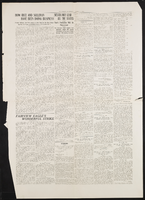Search the Special Collections and Archives Portal
Search Results
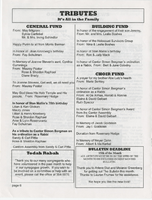
Newsletter from Temple Beth Sholom (Las Vegas, Nev.), April 1998
Date
Archival Collection
Description
The Bulletin is the monthly newsletter from Temple Beth Sholom. This issue includes columns by the Temple President and the Cantor, religious school news, announcements and calendars, event photographs, and advertisements.
Text

11th Anniversary Issue of the Sands Times magazine from the Sands Hotel and Casino, December 1963
Date
Archival Collection
Description
The 11th anniversary issue of the Sands Times from the Sands Hotel and Casino in Las Vegas, Nevada. Headlines in the magazine include: "If It Happens in Vegas It's Usually at the Exciting Sands Hotel", "Sands Casino Execs - The Friendliest", "Hosts in Las Vegas!", "New Faces in Sands Family of Stars", "Sands - Grounds for Marriage", "Sands is Convention Executive Center", "Sands Conventions", and "Sands Guests".
Mixed Content
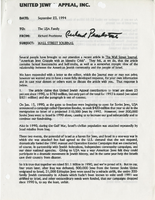
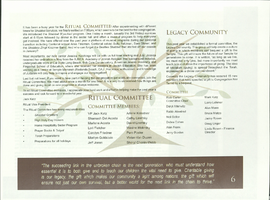
Annual report from Congregation Ner Tamid, 2013-2014
Date
Archival Collection
Description
Annual report from Congregation Ner Tamid, 2013-2014
Text
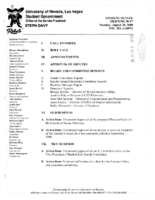
Meeting minutes for Consolidated Student Senate, University of Nevada, Las Vegas, August 28, 2000
Date
Archival Collection
Description
Text
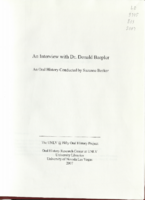
Transcript of interview with Dr. Donald Baepler by Suzanne Becker, April 23, 2007
Date
Archival Collection
Description
Text
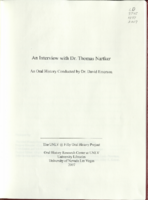
Transcript of interview with Dr. Thomas Nartker by Dr. David Emerson, November 13, 2006
Date
Archival Collection
Description
Text
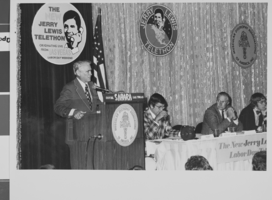
Photograph of Mayor Oran K, Gragson speaking at the pre-telethon production meeting, Las Vegas, Nevada, 1974
Date
Archival Collection
Description
Image
Jerry Jackson Papers
Identifier
Abstract
The Jerry Jackson Papers, 1953 to 2009, contain materials related to Jackson's career in entertainment as a director, producer, choreographer, writer, lyricist, and costume designer. Jackson's work on
Archival Collection

